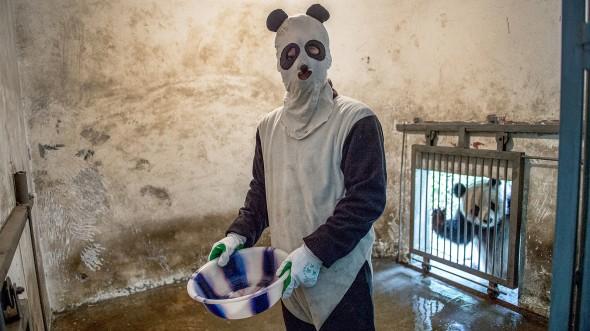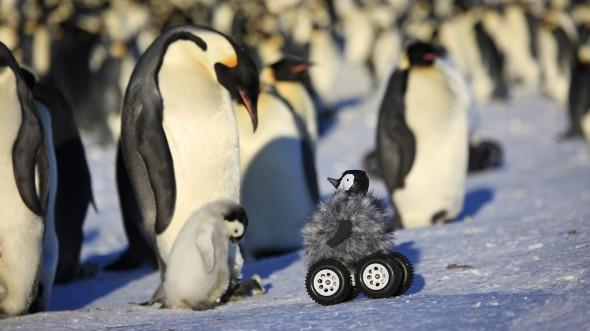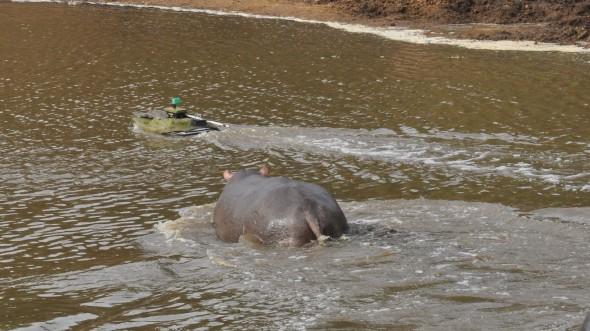Did you dress up as a giant panda this Halloween? Well, panda keepers in China take it a step further by sprinkling themselves with panda poop and pee!
“That’s to mask the human smell,” says Andrea Muller of Pandas International. By wearing panda suits when handling the cubs, caregivers minimize the animals’ stress and human attachment, Muller says.
At the International Crane Foundation in Wisconsin, staff dress like ghosts—wearing white to hide their bodies—and use a bird-shaped hand puppet to interact with baby whooping cranes hatched at the foundation.
“We try to replicate what actual parents do,” says Kim Boardman, the assistant curator of birds. “The puppet offers natural food, catches grasshoppers, and teaches chicks to forage.”
Biologist Tom Reimchen and his students at the University of Victoria in British Columbia wanted to see how salmon reacted to spirit bears—black bears with a genetic variation that gives them white fur—compared to more common black bears with black fur. So, Reimchen and his students wore either white or black fabric and waded in a fishing hole.
The salmon were less spooked by students wearing white, suggesting that spirit bears may be more successful at catching fish, possibly because the fish don’t recognize the rare bears as predators.
To see how moose around Yellowstone National Park would react to the smell of wolves that were making a comeback in the area, biologist Joel Berger of the Wildlife Conservation Society and his colleagues wore a moose suit. The suit allowed them to get close and drop wolf poop near the moose.
The scientists discovered that the moose had forgotten to run when they smelled a wolf, but the moose quickly learned to avoid the wolves when they returned to the area!
Sometimes, scientists resort to dressing up their technology rather than themselves.
To get close to emperor penguins in Antarctica, scientists camouflaged remote-controlled rovers to look like a penguin adult and chick. Many penguins tried to communicate with them. Studies also showed that the penguins were less stressed out by these robotic penguins than they were by humans.
In Kenya, researchers faced danger from hippos while trying to collect river water samples, but they knew that hippos and crocs ignore each other. So Amanda Subalusky, a graduate student at Yale University, and her colleagues decided to construct a remote-controlled boat disguised with a lifelike crocodile head and outfitted it with scientific instruments. The students were able to steer the boat through hippo swimming holes and collect the data they needed.
Source
 Blog EBE English Book Education
Blog EBE English Book Education







